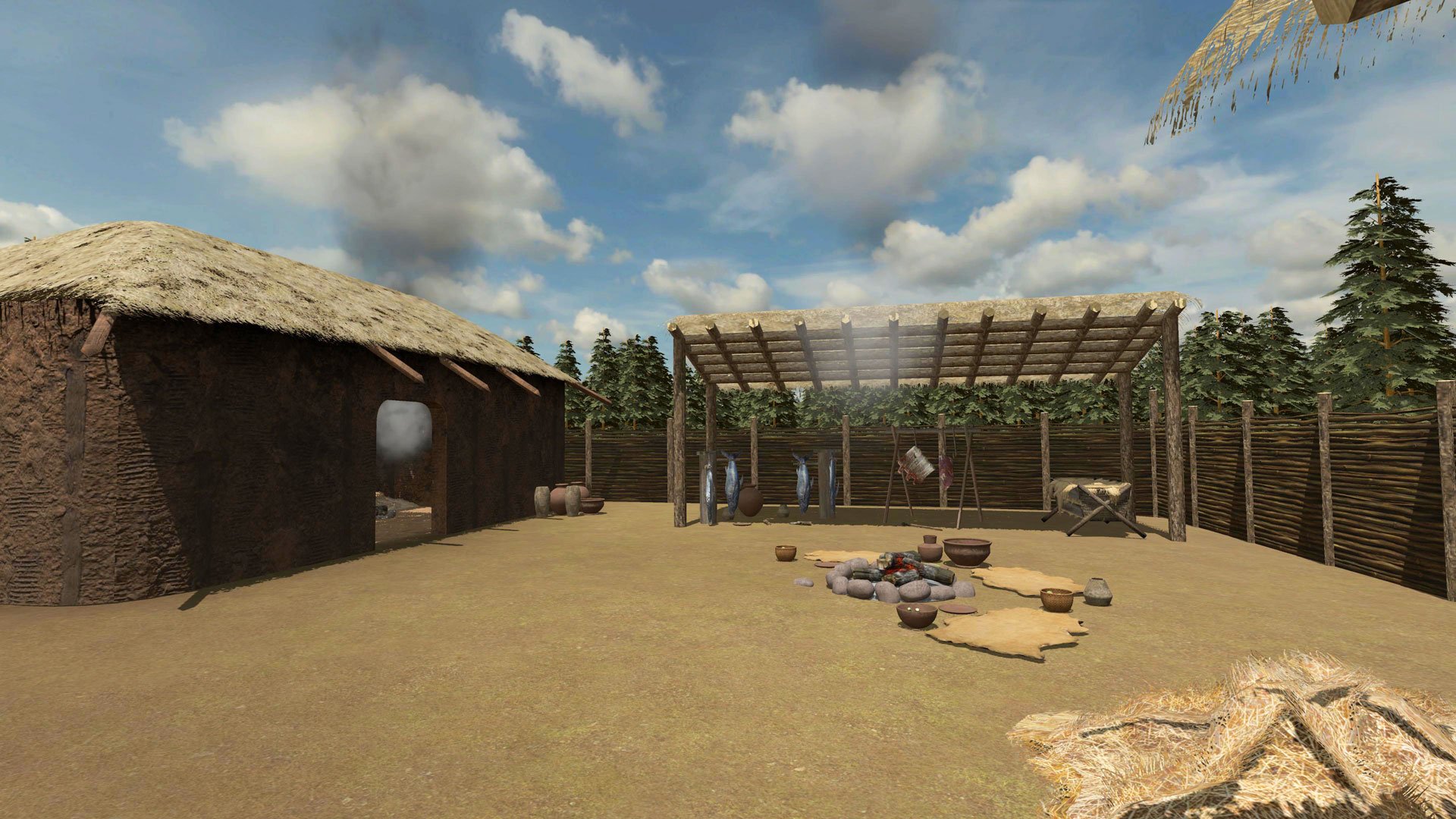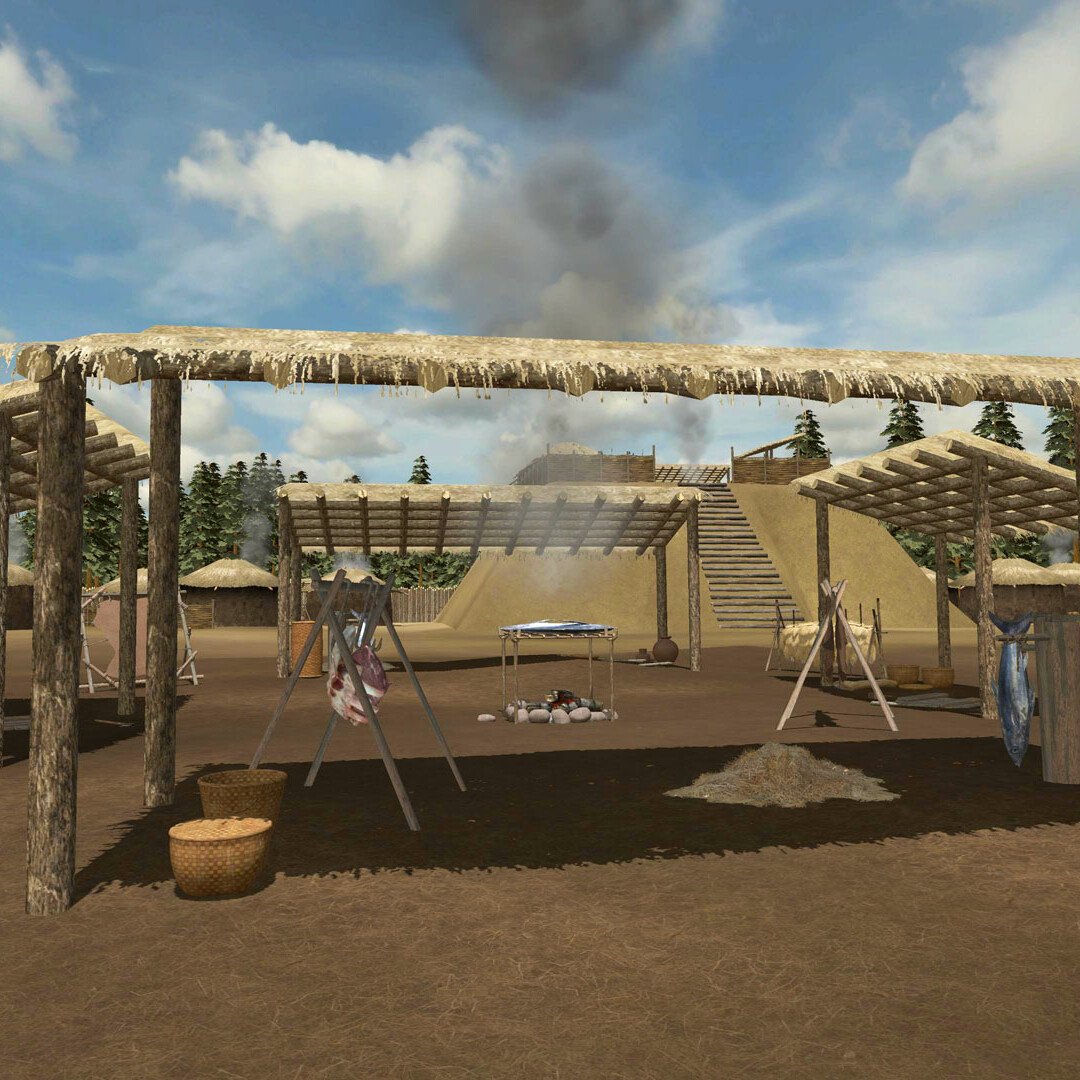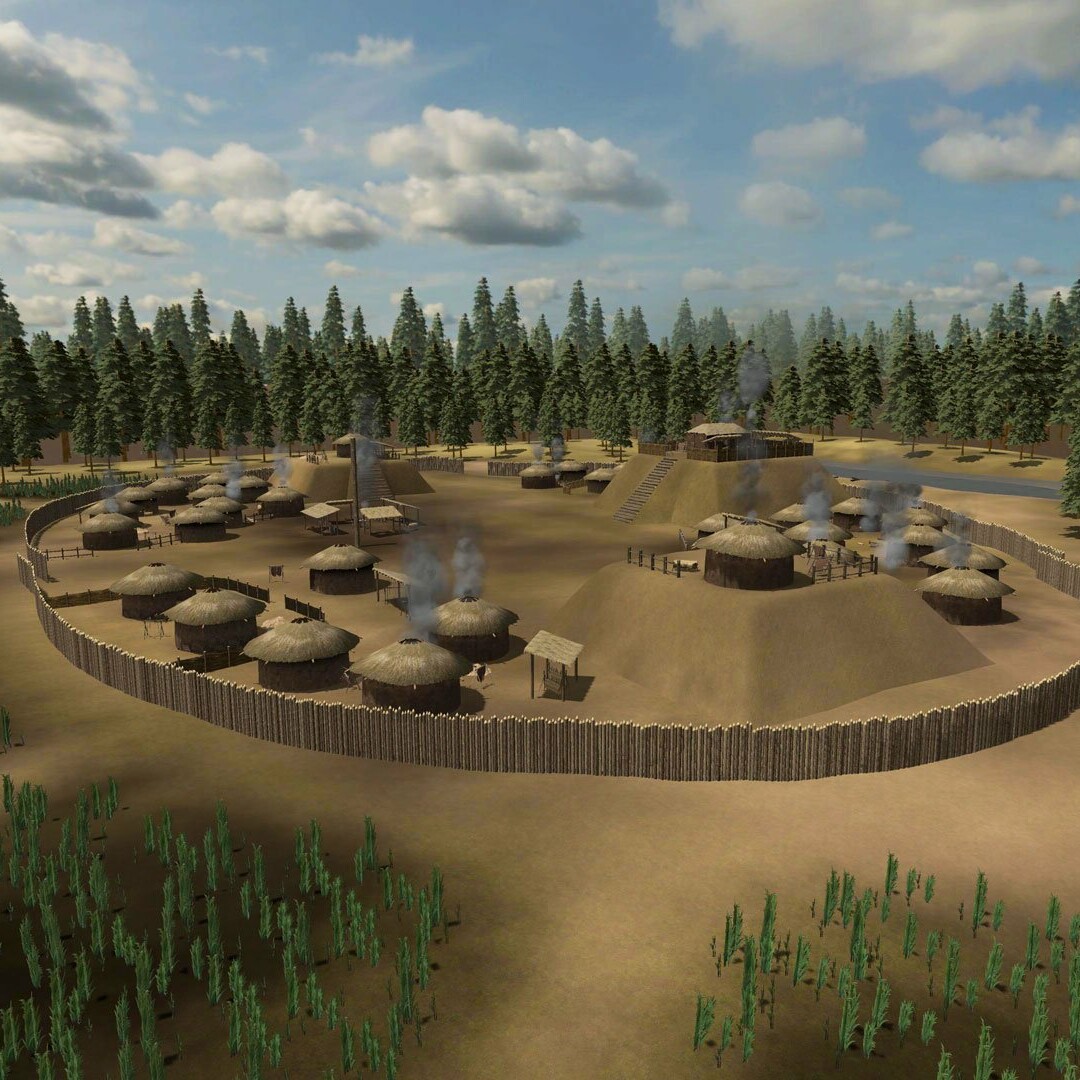Native American history in Augmented Reality
Spotlighting Indigenous history in American Revolution AR
Originally created as part of the Fort Watson AR app, Santee AR focuses on the lives of the Indigenous people who occupied the site of Fort Watson before any conflict, bringing the Native American settlement into vivid colour on the shore of Lake Marion.
Whilst the Liberty Trail AR suite offers users an immersive insight into the significant moments of the American Revolution in South Carolina, inviting users into interactive scenes from several key conflicts, the Fort Watson AR battle site bears a double significance with the deeper Native American history of the mound at the Santee Wildlife Refuge.
Visiting the mound today is a peaceful experience, a stark contrast to the grim reality of the 1781 siege that once unfolded there. As visitors take in the quiet grassy mound and gentle rustling of surrounding vegetation, it’s difficult to picture a battlefield or Revolutionary fort. Yet, the tranquility of the land feels somehow in harmony with the long-lost presence of the Indigenous village that once stood here.
Partners
Santee AR is a partnership project between staff at the American Battlefield Trust, the South Carolina Battleground Preservation Trust (SCBPT), and the U.S. Fish and Wildlife Service.
Thanks to archaeologist and Assistant Director of Native American Studies at University South Carolina Lancaster, Chris Judge for his guidance on the Santee Indian scene.
Special thanks to Chief Gregory Crummie and members of the Santee tribe for their engagement with the projects and their feedback.
Understanding the site's extensive history
Through the augmented reality Santee experience, users are transported to the Santee Indian Mound at Wright’s Bluff, situated along the shore of what is now Lake Marion. Long before the skirmish between local militia and British forces stationed at the Fort, this site was home to a thriving Indigenous village. The AR scene traces back to the 1500s, revealing the landscape and it may have appeared when Indigenous people lived, farmed and held ceremonies on this land.
The prehistoric mound – constructed by pre-contact Indigenous communities, likely around AD 1300-1500 – served as a residential space, ceremonial center, and burial ground. The largest known Indian mound from this era in South Carolina’s Coastal Plain, it is accompanied by two smaller, less visible mounds. The immersive AE reconstruction offers users a first-person perspective on the cultural and spiritual significance of the site, capturing the terrain, vegetation, and atmosphere of the time with historical accuracy.
Whilst the mound later became the site of the Fort Watson siege during the Revolutionary War, its deeper history as a sacred Indigenous place often remains overlooked. The tranquil setting today contrasts sharply with the conflict that once took place here, yet it still resonates with the memory of those who lived in harmony with the land long before the arrival of European settlers. Notably, Lake Marion – a man-made reservoir – did not exist until the 1940s, underscoring how much the landscape has changed since the time of the Santee people.
The Santee AR experience offers a powerful window into the past, prior to the arrival of European colonialists in the 1600s – a time when Indigenous communities thrive across the region. With colonisation came disease, conflict, and forced displacement, devastating Native populations. The Santee tribe, once numbering around 1,000 members, was reduced to just 85 individuals. They had left this area long before British forces constructed Fort Watson atop the sacred mound.
Despite centuries of upheaval, the Santee people endure. In 1976, they formally reestablished their community through the Santee Indian Organisation. Today, many Santee descendants reside in the nearby town of Holly Hill, and the Santee tribe currently has around 635 members in South Carolina.
Crafting our technical approach
Within the augmented reality experience, users can explore the reconstructed landscape in rich detail, moving through a dynamic scene that brings the Santee tribe’s heritage to life. Hotspots, marked by bobbing arrows, allow users to tap and reveal information about various elements – from wattle and daub dwellings and intricately crafted ceramics to raw animal hides and fish smoking over open fires. These interactive features enhance the AR immersion, encouraging deeper engagement with the Santee settlement and its history. All of this unfolds against the backdrop of the beautifully modelled Santee river, a vital lifeline for the community.
Zubr’s 3D developers worked to create a fully calibrated, interactive AR scene that can be explored both onsite at the Santee Indian Mound and remotely – whether at home or in the classroom. Users can navigate through the environment, discovering enlightening key facts accompanied by rich animations. Every element was crafted with historical accuracy in mind, allowing users to get up close to detailed representations of the tribe’s daily life.
Engaging audiences of all ages in ways that traditional textbooks cannot, the Santee AR experience immerses users in the often-overlooked history of the Santee tribe – a people with deep ancestral and spiritual ties to the burial mound. At the heart of this project was a commitment to honoring that connection, especially in light of how frequently Indigenous histories have been marginalized or erased from mainstream narratives. Whilst Zubr’s collaboration with South Carolina historians provided vital context, it was the insights and feedback from Santee tribe members that truly shaped the authenticity and integrity of the AR reconstruction.
Life on the Santee River in vivid detail
The Santee AR scene offers a unique and engaging way to experience Indigenous history. By leveraging augmented reality to recreate life on the Santee River, Zubr unites users with an immersive, educational experience that brings this lost history to life. Through crucial attention to detail and story-driven scene building, the Santee AR experience demonstrates how augmented reality can be used to enhance our understanding of history in innovative ways, allowing users to explore, interact with, and learn from pivotal moments in history as if they were there themselves.
Eager to uncover more immersive scenes of the American Revolution in South Carolina? In the Fort Watson AR app, understand how the land was used by the Santee tribe who lived here thousands of years ago, discover how the site was adapted by British forces in the 18th century when they built the fort, and witness the Patriot troops’ attempts to seize the fort during the Revolution and their successful attack led by General Marion Lee. In the Liberty Trail AR app, discover three more detailed locations in Eutaw Springs, Fort Fair Lawn and the Horn Work at Marion Square.
Download the Fort Watson AR app and Liberty Trail AR app on iOS and Android now to find out more about South Carolina’s Revolutionary history.








